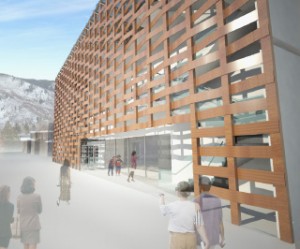The West End has long been Aspen’s most sought-out neighborhood. For many buyers, the stately Victorians and stunning modern homes along the West End’s leafy streets are the epitome of Aspen living. More and more buyers, though, are looking east as this often-overlooked part of town experiences a renaissance.
“Some people call it Aspen’s Upper East Side,” jokes Brian Hazen, a Realtor with MasonMorse.
And why not? It’s hard to think about gentrification in Aspen – not anymore – but for a long time, the East End was home to some of Aspen’s, well, less glamorous neighborhoods. In recent years, though, aging homes have been replaced with beautiful new houses and townhomes, often at prices much lower than their West End neighbors, with a convenience to downtown Aspen that the West End doesn’t have.
“In the last five years it’s kind of taken on a new dimension out there,” Hazen says.
The biggest changes are yet to come. Much of the east side of downtown is getting a facelift, with new commercial and mixed-use buildings replacing fading old buildings. The most revolutionary of these is the new Aspen Art Museum. Designed by Japanese architect Shigeru Ban using woven wooden trusses and glass and a rooftop sculpture garden, the new art museum will add a cultural anchor to the East End that’s been lacking.
“With the Wheeler Opera House to the west and the new AAM on the east, Aspen will now have cultural ‘bookends,’” says Heidi Zuckerman Jacobson, CEO and director of the AAM.
That could mean lots of activity on the East End that doesn’t involve grocery shopping.
“It just creates a new vitality in the downtown core,” says Adam Roy, a land planner with DJA Planning + Development. His firm is working with two major new projects on Spring Street: the redevelopment of the former Stage 3 theater into the 625 Aspen project, and the Spring Building. In all, Roy counts eight redevelopment projects on Spring Street, almost simultaneously.
“It can be perceived as too much going on at one time, but my hope and expectation is that there is a synergistic opportunity here,” Roy says. “All the different property owners can work to create a vibe.”
For many homebuyers, that’s the sort of vibe they’re looking for. The West End boasts being close to the Aspen Institute and the Aspen Music Festival. It has the Red Brick and Yellow Brick centers, too. But the East End is close to downtown restaurants, shopping and attractions.
“The West End will always be very popular,” says Realtor Scott Davidson, with Aspen Associates. “It will probably always be one of the most desirable areas, no question. But the East End will continue to grow in popularity as the inventory gets better and is more inviting to the new buyer, because you can walk to town from there. It’s all about access.”
That access is important for a lot of homebuyers. Many are looking to downsize, Hazen says, so the smaller homes and townhouses on the East End are a perfect fit, and at a better price than many parts of town. And like in that other Upper East Side, it offers easy access to the action.
“Many buyers are more concerned about convenience,” Hazen says, “in some cases walking into town, not having a car. In the East End, that’s what the amenity is. As people get older they simplify their lives. In a recession, they downsize. They make it simpler. A lot of urban people don’t find our downtown that congested, busy or loud. They really enjoy the ability to walk and not have to get into their car.”


